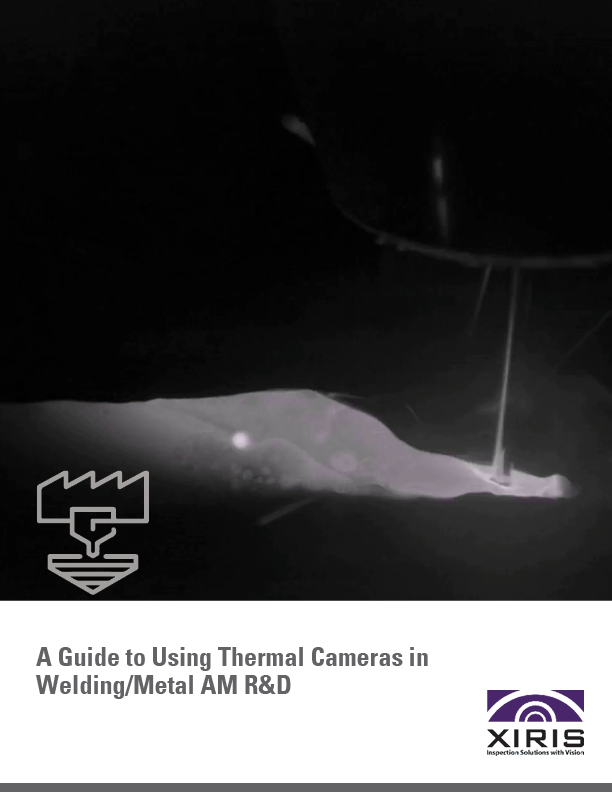Fronius’ Cold Metal Transfer (CMT) is a welding process that achieves low heat inputs and zero spatter. These properties make it a popular process for welding and Directed Energy Deposition (DED) of aluminum alloys. The CMT of aluminum is widely used for thin sheet welding across a number of industries such as the automotive industry. Using a CMT process in aluminum DED has also gained popularity for the production of complex structures in the aerospace and automotive industries.
The Challenges of Aluminum Welding and DED
Welding of aluminum has its own difficulties that may differ from those faced during welding of steels. Aluminum conducts heat much better than steel. Because of that, a similar level of heat input is necessary to weld aluminum, even though the melting temperature of aluminum is much lower than that of steel.
Due to the relatively high heat inputs required, shrinkage and residual stresses in aluminum welding can be quite high, causing cracks in the weld bead. In DED processes that use aluminum, bead cracking can also appear, becoming even more pronounced due to the multiple reheating cycles of the deposited layers in DED.
Another major challenge of working with Aluminum is porosity. Porosity reduces the mechanical strength of a weld or an AM build-up due to microcracks that may initiate at the pores in the weld. Porosity is such a challenge because it is hard to detect, but it also reduces the fatigue strength of the resulting structure.
Temperature gradients and cooling rates are among the major factors that affect the porosity formation. The complex thermal history of the inner layers in a DED process often result in a coarse grain microstructure which is more prone to gas entrapment that in turn causes porosity.
|
Video of CMT of aluminum without and with the Voltage Trigger The first few seconds of the video is recorded by the camera working in standard mode that allows the arc to appear in some images. Then, the Xiris Voltage Trigger Kit is applied to trigger the image acquisition. |
The Power of using Thermal Imaging on Fronius CMT
To ensure good quality welds and DED-built Aluminum structures, the control of the temperature distribution of the process in real-time is critical. Welding complex thin-sheet structures may result in local overheating and burn-through. For DED, control of temperature is even more critical, as DED of Aluminum is a thermally unstable process due to its repeated heating-cooling cycles and the temperature variations between the layers.
The best way to monitor the thermal state of the welded part or DED build-up is to use a thermal camera. Unlike pyrometers or thermocouples which measure temperature at one location at a time, a thermal camera provides a 2D snapshot of the temperature distribution of the entire area of interest at the same time.
However, it can be extremely difficult to obtain consistent and accurate temperature measurements with a thermal camera during welding or DED of aluminum alloys. The light of the weld arc is a major issue, as the arc is often much brighter than the thermal infrared emission of heated aluminum.
As a result, most conventional thermal cameras get saturated with the light from the weld arc and cannot be reliably used to monitor the weld area.
How to Eliminate Bright Arc Light from Thermal Images of the CMT process
It was not until recently that a reliable solution to the problem of imaging aluminum welding appeared. The solution is to use the Xiris XIR-1800 thermal camera with the Xiris Voltage Trigger Kit.
The newly developed XIR-1800 is a high dynamic range SWIR camera that can see more of a very bright arc. Combined with the Voltage trigger kit, the hardware can sequence the image acquisition so that the bright arc light can be eliminated from the thermal images.
During the Fronius CMT process, after the wire gets into contact with the weld pool, the power is reduced and the wire is retracted from the weld pool until the arc is re-established.
The brief point in time while the wire is in contact with the weld pool, there is no arc present. The Xiris Voltage Trigger Kit can help the XIR-1800 thermal camera capture a precise point in the metal transfer cycle so as to achieve reliable temperature measurements that are not ruined by the arc light intervention.
The level of improvement can be seen in the video above. The regular CMT welding of an aluminum fillet joint is shown. The first few seconds of the video is recorded by the camera working in standard mode that allows the arc to appear in some images. Then, the Xiris Voltage Trigger Kit is applied to trigger the image acquisition.
The difference in the image quality is quite obvious. When installed with the Xiris Voltage Trigger Kit, the XIR-1800 camera can produce thermal images that are not affected by the arc light and can be used to produce consistent and reliable temperature measurements that can be used for process and quality control.
***
To summarize, Fronius CMT, coupled with thermal imaging technology, provides a robust solution to tackle aluminum welding and DED challenges. By effectively eliminating arc light interference, the Xiris XIR-1800 camera with the Voltage Trigger Kit enables precise temperature measurements.
This integration empowers enhanced control, superior weld quality, and increased operational efficiency.
Stay updated with the latest insights on welding challenges by subscribing to our blog. Subscribe now and weld your inbox!
Do you use LinkedIn? We are active with valuable content! Follow us!
 |
A Guide for Using Thermal Cameras in Welding and Metal AM R&DHeat measuring sensors have been applied to metal joining and fabrication processes for many years. Most of the equipment used in past would not allow for proper temperature measurement and characterization because only a single point was being measured at a time. |



.png)


